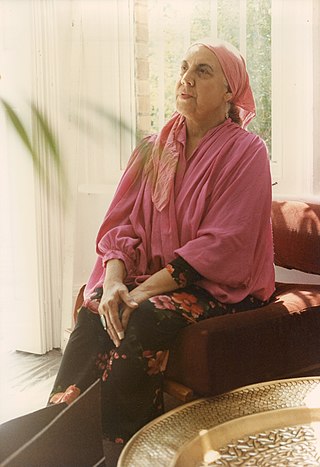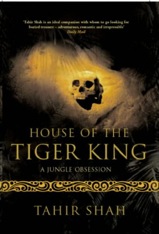
Sorcerer's Apprentice is a travel book by Anglo-Afghan author, Tahir Shah.
The Inkarri myth is one of the most famous legends of the Inca. When the Spanish conquistadores executed the last ruler of the Inca people, Atahualpa, he vowed that he would come back one day to avenge his death. According to the legend, the Spaniards buried his body parts in several places around the kingdom: His head is said to rest under the Presidential Palace in Lima, while his arms are said to be under the Waqaypata in Cuzco and his legs in Ayacucho. Buried under the earth he will grow until the day that he will rise, take back his kingdom and restore harmony in the relationship between Pachamama and her children.
Artisuyu was the eastern part of the Inca Empire which bordered on the modern-day Upper Amazon region which the Anti inhabited. Along with Chinchaysuyu, it was part of the Hanan Suyukuna or "upper quarters" of the empire, constituting half of the Tahuantinsuyu, the "four parts bound together" that comprised the empire.
Paititi is a legendary Inca lost city or utopian rich land. It allegedly lies east of the Andes, hidden somewhere within the remote rainforests of southeast Peru, northern Bolivia or northwest Brazil. The Paititi legend in Peru revolves around the story of the culture-hero Inkarri, who, after he had founded Q'ero and Cusco, retreated toward the jungles of Pantiacolla to live out the rest of his days in his refuge city of Paititi. Other versions of the legend see Paititi as an Inca refuge in the border area between Bolivia and Brazil.
Mameria is an area of high-elevation jungle to the northeast of the Paucartambo range in southeast Peru, drained by the Mameria river, an affluent of the Nistrón river. Until the 1960s this remote and sparsely populated area would have been considered a part of the Callanga jungle area. Machiguenga peoples, fleeing the slavery that they were subject to along the Yavero river, fled to this area which acquired its current name from the Machiguenga observing that "mameri," which means "there are none," regarding the lack of fish in the river.

Tahir Shah is a British author, journalist and documentary maker of Afghan-Indian descent.
Gregory Deyermenjian is a psychologist and explorer. In 1981 he visited the ruins of Vilcabamba la Vieja at Espíritu Pampa, and then turned his attention to the northeast and north of Cusco, Peru. Since the mid-1980s he has made numerous expeditions to Peru investigating Paititi, a legendary lost city that is part of the history and legend of the western Amazon basin. He is a long-term Fellow of The Explorers Club.

Amina Shah, later known as Amina Maxwell-Hudson, was a British anthologiser of Sufi stories and folk tales, and was for many years the Chairperson of the College of Storytellers. She was the sister of the Sufi writers Idries Shah and Omar Ali-Shah, and the daughter of Sirdar Ikbal Ali Shah and Saira Elizabeth Luiza Shah Scottish woman. Her nephew is the travel writer and documentary filmmaker Tahir Shah; her nieces, Safia Shah and the writer and documentary filmmaker Saira Shah.

Beyond the Devil's Teeth is a travel book by Anglo-Afghan author, Tahir Shah. The text was published in April 1995 by Octagon Press.

In Search of King Solomon's Mines is a travel book by Anglo-Afghan author, Tahir Shah, relating his travels in Ethiopia with only local people for company and assistance.

In Arabian Nights is a travel book by Anglo-Afghan author Tahir Shah illustrated by Laetitia Bermejo. which takes up where his previous book The Caliph's House leaves off, recounting, among much else, events at Dar Khalifa, the Caliph's House, in Casablanca where the Shah family have taken up residence.

The Caliph's House is a travel book by Anglo-Afghan author, Tahir Shah.
Octagon Press was a cross-cultural publishing house based in London, UK. It was founded in 1960 by Sufi teacher, Idries Shah to establish the historical and cultural context for his ideas. The company ceased trading in 2014.

Timbuctoo is the fictional account of the illiterate American sailor Robert Adams' true life journey to Timbuktu, and his arrival in Regency London. The novel is written by Anglo-Afghan author, filmmaker, and adventurer Tahir Shah. It was released on July 5, 2012, by Secretum Mundi Publishing.
House of the Tiger King is a 2014 British–Swedish deconstructionist documentary released in 2004. A British travel writer/explorer, Tahir Shah, and documentary filmmakers David and Leon Flamholc, join forces to go on an expedition to Peru in search of Paititi, the Inca lost city of gold. Things do not go as planned, and on their first attempt, they are forced to give up due to two main setbacks: terrible conditions and troubles with their guide, American survivalist Vietnam-war veteran Richard Fowler. On their second attempt, Flamholc and Shah find various locals to help them, including Eduardo Huamani Padilla. Tensions begin to arise between the two, in part over the difficulties in transporting the amount of camera equipment carried by the film crew, and ultimately Shah leaves the Flamholcs stranded as he continues the journey on his own. The director explains in the voiceover that he will use the best footage to put together a story once he returns home, but that "Whatever it will look like, it will never show what actually happened."
Richard "Aukcoo" Fowler (1948–2016) was an American wilderness guide, naturalist, and former U.S. Army Ranger based in Iquitos, a city in the Peruvian Amazon.
Search For the Lost City of Gold is a 2003 documentary commissioned by The History Channel and Five (UK). It traces Tahir Shah's epic quest for the lost city of Paititi in the Madre de Dios jungle of Peru, to which the Incas fled from the Spanish in 1532. This journey and his TV-hour film also formed the basis for the book House of the Tiger King, as well as the cinematic feature film with the same name. The film was produced by Caravan Film and was directed by Swedish film director David Flamholc.
Caravan Film is a London, UK based independent film production company headed by feature and documentary filmmakers Leon & David Flamholc. They produce both documentaries and feature films, as well as shorts and animation.
Thierry Jamin is a French explorer and pseudohistorian known for his research about Paititi and the presence of the Incas and pre-Inca civilization in the Amazonian rainforest.
Dar Khalifa, or The Caliph's House, is a large, historical landmark and private home in walled grounds. It is located in Ain Diab, an affluent suburb of Casablanca that was also host to a sprawling shanty town until the area was redeveloped. Constructed in a traditional Moroccan style, with numerous "riads", or garden courtyards, the property extends to some 5000 square metres, and is situated on a cliff overlooking the Atlantic shore. As its name suggests, the mansion was once owned by a wealthy Khalif or ruler.








